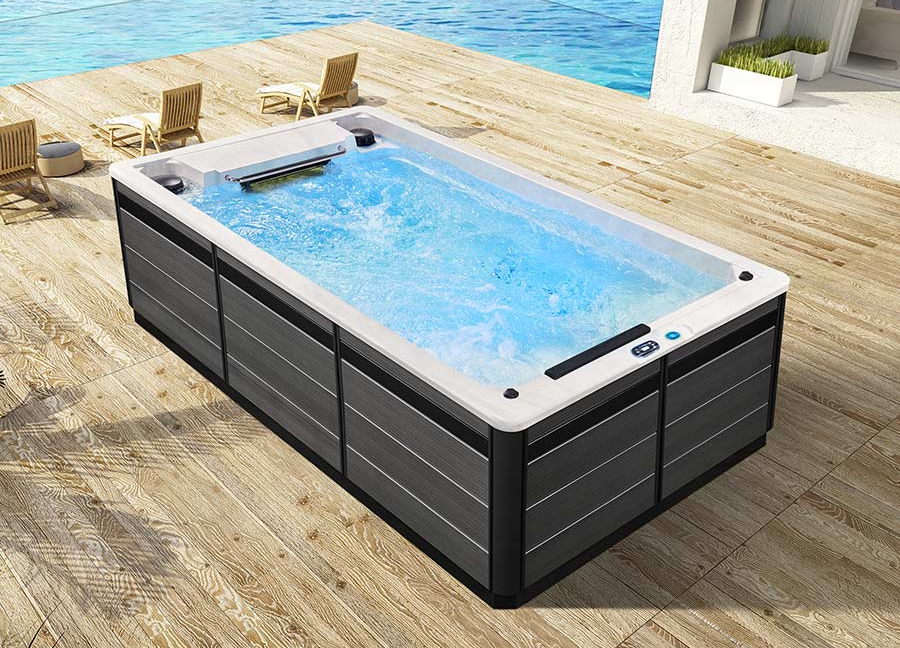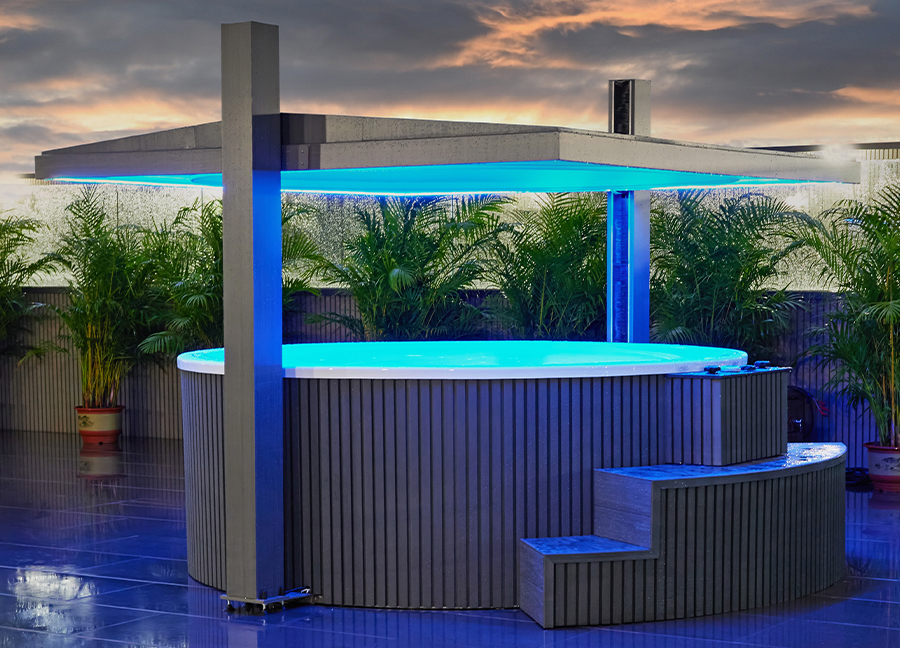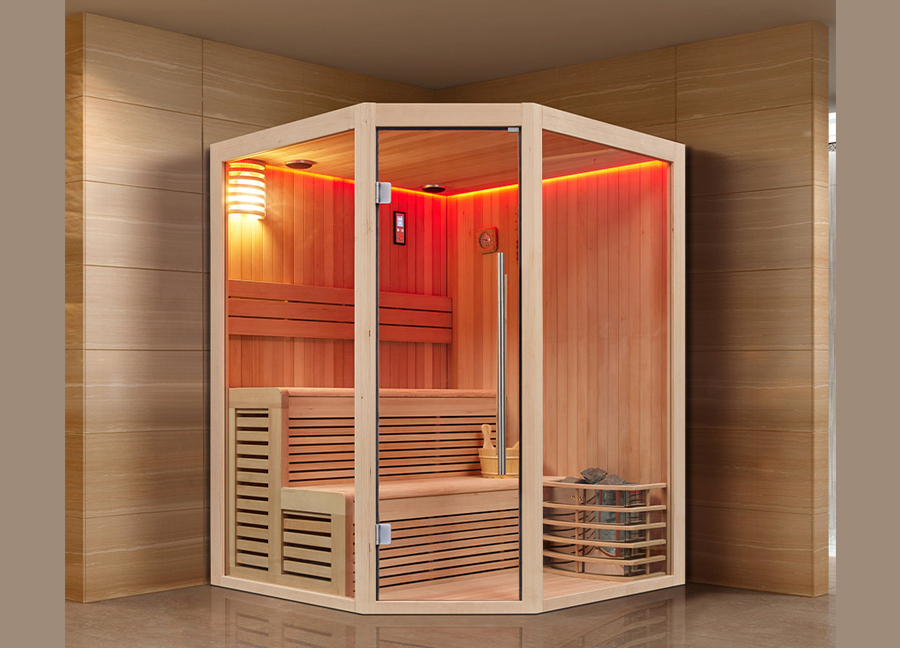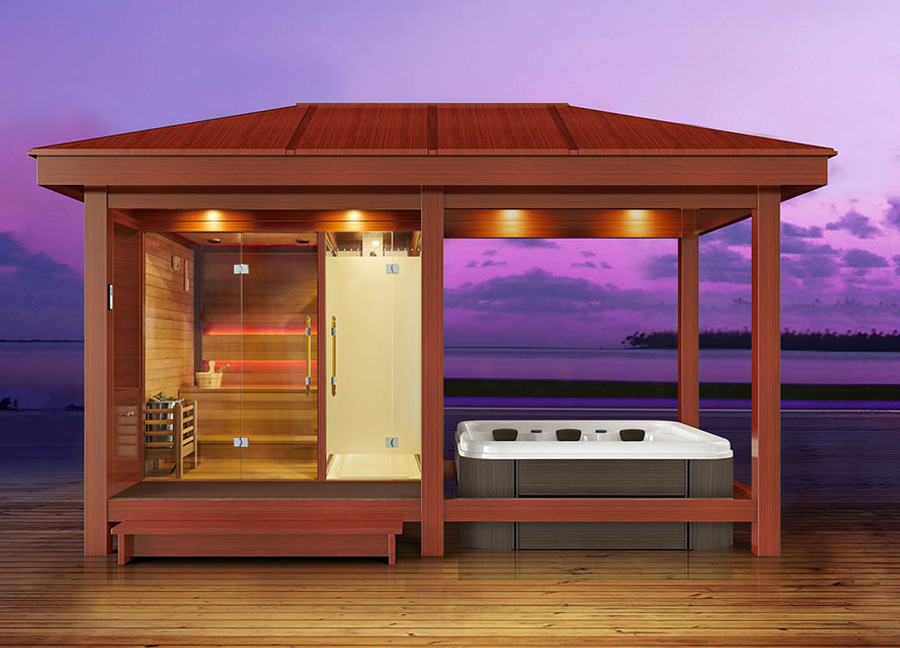As an ancient and effective way to relax, sauna bathing is widely accepted for its effects in relieving stress, improving blood circulation, and sweating and detoxification. Among them, indoor sauna rooms are increasingly favored by people in homes and high-end living spaces for their convenience, privacy, and continuous comfort.
What is an indoor sauna room? What are its structures, types, functions, advantages, and installation points? This article will focus on the keyword "indoor sauna room" and conduct a systematic and detailed analysis from a professional perspective.
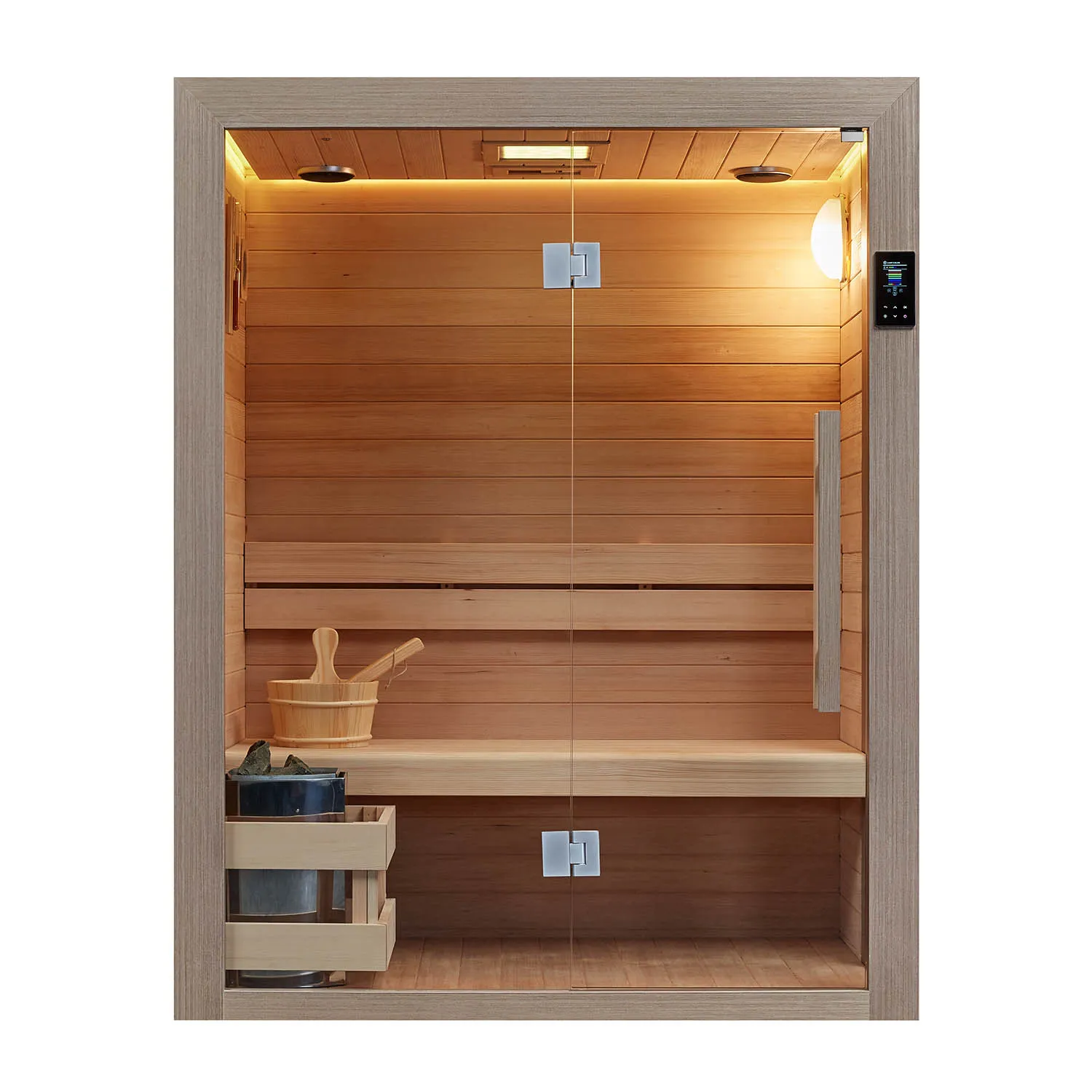
What is an indoor sauna room?
An indoor sauna room refers to a closed heating space installed inside a building (such as a residence, villa, club, gym, or hotel, etc.) for sauna bathing experience. It raises the indoor temperature to 40℃~100℃ through heating methods (traditional steam, far infrared, carbon crystal electric heating, etc.), allowing people to relax, detoxify, and promote metabolism through sweating in a high temperature environment.
Compared with outdoor saunas, indoor sauna rooms have better privacy and spatial integration, can be coordinated with home decoration styles, are easy to use in all seasons, are not restricted by external climate conditions, and are especially suitable for people who pursue high-quality life.
What are the types of indoor sauna rooms?
The types of indoor sauna rooms are:
1. Traditional steam sauna room (dry steam)
2. Far infrared sauna room (low temperature dry steam)
3. Steam wet sauna room (wet steam)
1. Traditional steam sauna room (dry steam)
The traditional steam sauna room is the most classic type. The core is to use an electric heating furnace to heat the volcanic stone, and then sprinkle a small amount of water on the stone to form steam, so that the temperature inside the room rises rapidly, generally reaching 80℃~100℃.
Features:
· Strong body sensation, sweat is discharged quickly;
· Dry air, suitable for people who like dry and hot environment;
· Longer preheating time is required;
· High ventilation requirements.
2. Far infrared sauna room (low temperature dry steam)
Far infrared sauna room uses infrared carbon heater or ceramic heating element to emit far infrared waves, which directly penetrate the skin, heat up the body and promote deep sweating. The indoor temperature is generally between 40℃ and 65℃.
Features:
·The temperature is low, suitable for the elderly or people with weak cardiovascular tolerance;
·Energy-saving and environmentally friendly, short preheating time;
·Not dependent on steam, low air humidity;
·Even heating, comfortable to use.
3. Steam wet sauna room (wet steam)
Wet sauna room mainly sprays high humidity steam through steam generator, the room humidity can reach 100%, the temperature is between 45℃ and 55℃, similar to steam bath.
Features:
·Moist and soft, conducive to improving the respiratory system;
·More suitable for use in dry areas or winter;
·High requirements for waterproofing and dehumidification;
·Suitable for people who like the "steam bath" experience.
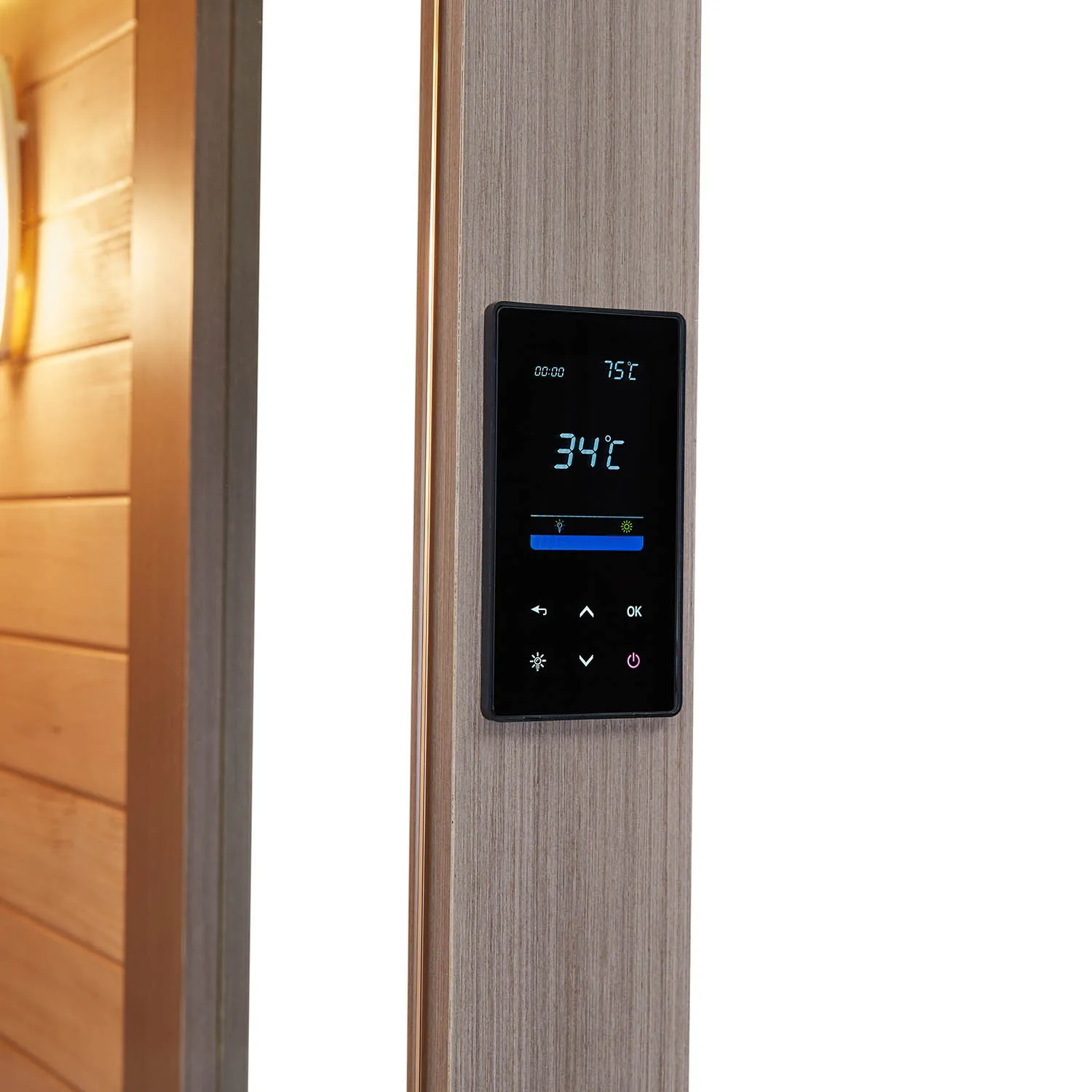
What does an indoor sauna room consist of?
A qualified indoor sauna room is not just a heating space. Its design, material selection, ventilation, heating system, etc. are all comprehensive manifestations of professionalism. Its basic structure usually includes: sauna room structure, insulation system, heating system, control system, ventilation system, seats and accessories.
1. Sauna room structure
Usually, solid wood structure is adopted. Common woods include Canadian hemlock, Finnish red cedar, southern pine, Nordic spruce, etc. These woods are resistant to high temperature, not easy to deform, fragrant and not easy to conduct heat, which are suitable for sauna use.
The wood needs to be specially treated with moisture-proof, mildew-proof and degreasing to ensure that it will not rot and deform in high temperature and high humidity environment.
2. Insulation system
The interior of the wall will be filled with high-efficiency insulation cotton or rock wool to reduce heat loss and improve energy utilization. In addition, it is also necessary to equip it with a moisture-proof layer and aluminum foil reflective film to enhance heat reflection and prevent water vapor from invading the wall structure to ensure the stability of indoor temperature.
3. Heating system
The heating equipment is the core of the sauna room, and varies according to the type:
·Dry steam type: electric heating furnace (volcanic stone is required);
·Wet steam type: steam generator is used;
·Far infrared type: carbon fiber heating plate or ceramic tube heater is used.
A high-quality heating system should have temperature control function, fast heating and safe use.
4. Control system
Modern indoor sauna rooms are usually equipped with intelligent control panels, which can set temperature, humidity and heating time. Some high-end products support remote mobile phone control or voice operation to enhance user experience.
5. Ventilation system
Reasonable ventilation not only helps to remove odor and moisture, but also maintains indoor oxygen content to avoid discomfort caused by long-term use. Indoor sauna rooms are usually equipped with air inlets and exhaust ports to form natural convection and maintain air circulation.
6. Seats and accessories
The interior is equipped with multi-layer solid wood benches, and the height and level design must take into account human comfort and temperature difference adaptation. Other accessories include thermohygrometers, hourglasses, aromatherapy devices, lighting fixtures, sound systems, etc., which are used to enhance the user experience.
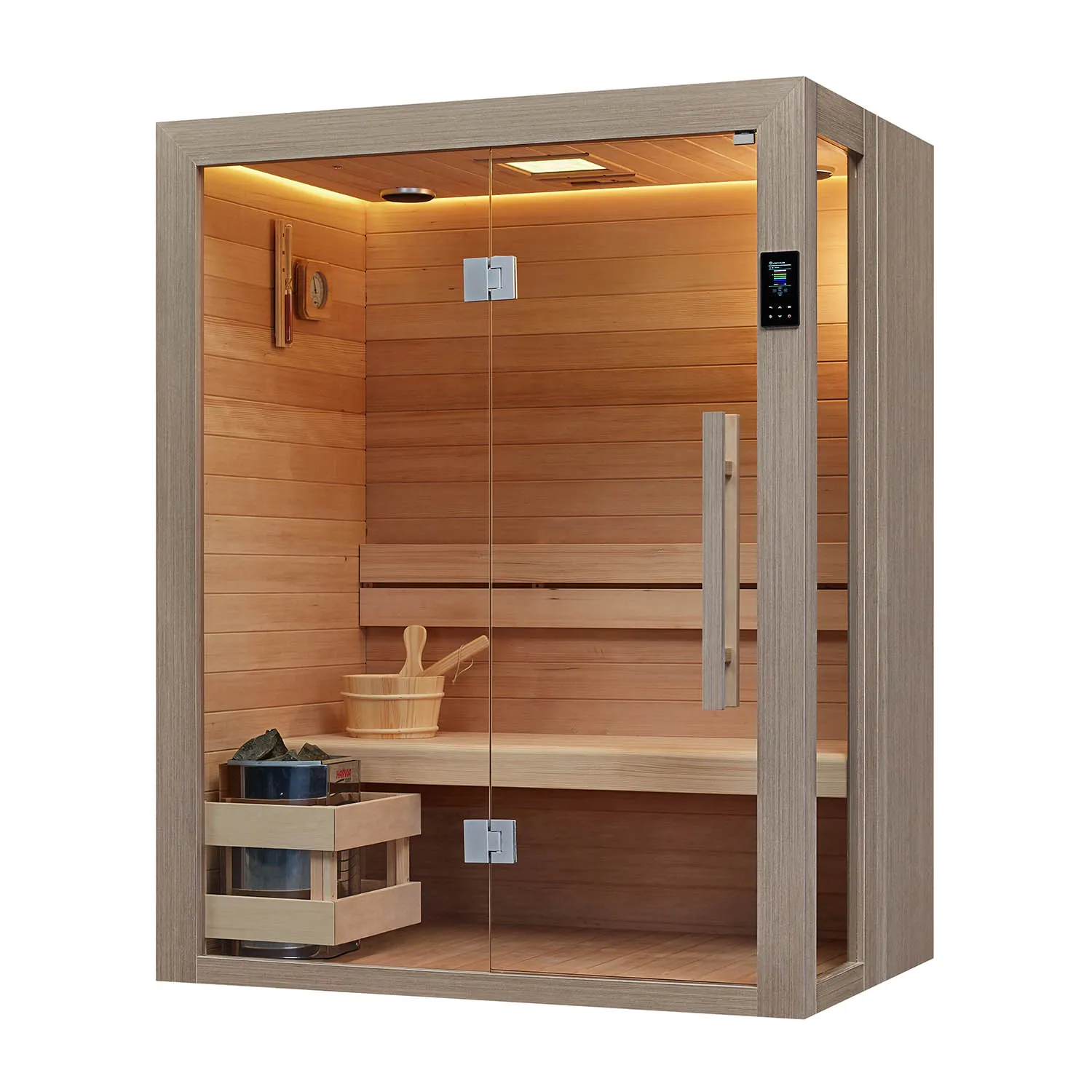
What should I pay attention to when installing an indoor sauna room?
Installation precautions:
1. Site selection and space planning
A room with good ventilation and stable structure should be selected to install the sauna room. It is recommended to be close to the bathroom area for easy bathing and washing after sweating. The area should be reserved according to the number of users. Common sizes such as 1.2m×1.2m are suitable for one person, and 1.8m×2.0m are suitable for multiple people.
2. Floor treatment
The floor of the sauna room must have good drainage and anti-slip properties. It is recommended to use tiles or anti-corrosion wood floors and install floor drains. Far infrared sauna rooms can be installed directly in dry areas.
3. Power supply configuration
Different types of sauna rooms have different power supply requirements:
·Single-person small sauna room: generally requires 220V power supply;
·Multi-person sauna room or steam sauna room: may require 380V industrial voltage.
It is necessary to be wired and grounded by professional electricians to ensure safe use.
4. Waterproof and moisture-proof
The wood of the sauna room itself needs to be treated with moisture-proof treatment, and the walls and ceiling need to be added with a moisture-proof layer. For wet steam sauna rooms, the dehumidification system needs to be improved to prevent moisture from spreading to the surrounding space.
5. Ventilation setting
The air inlet should be close to the heating source, and the exhaust port should be set at the diagonal to ensure smooth air circulation. Avoid setting the sauna room in a closed space, otherwise it is easy to cause stuffiness and hypoxia.
How to use and maintain the indoor sauna room correctly?
1. Correct use of indoor sauna room
· Preheat for 15-30 minutes before use;
· It is not suitable to use on an empty stomach or immediately after a meal;
· It is recommended that the single sauna time should not exceed 20 minutes;
· It can be divided into multiple steam baths, and appropriate water is replenished in between;
· Rinse the body and replenish electrolytes in time after use
2. Cleaning and maintenance of indoor sauna room
·Open the door for ventilation after each use to exhaust water vapor;
·Wipe the internal wood surface regularly to prevent dirt accumulation;
·Clean the dust on the surface of the heating furnace volcanic stone and far-infrared panel;
·Regularly check the operation of the circuit and control system;
·Ask professionals for comprehensive maintenance every six months or one year.
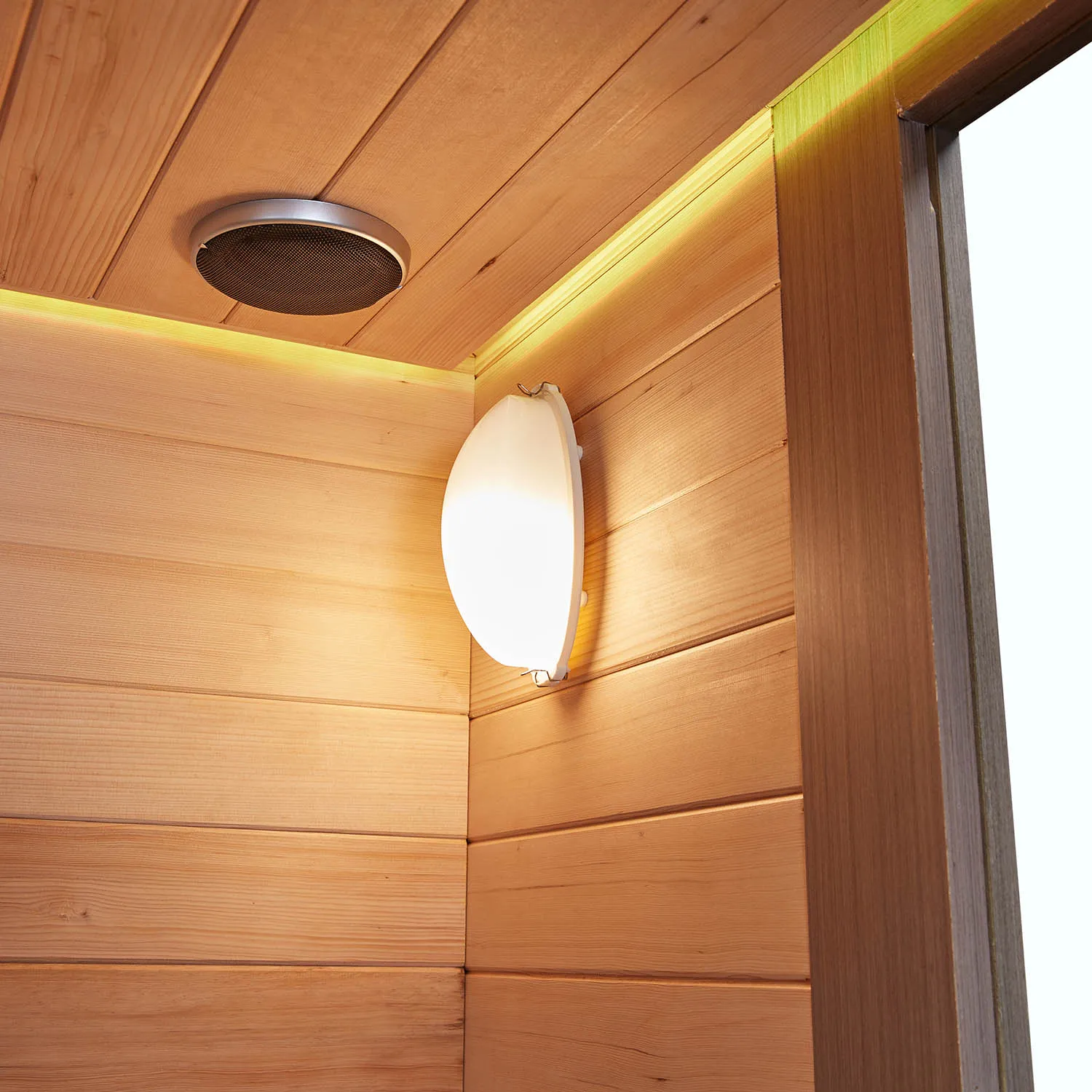
Health value of indoor sauna room - did you know?
Long-term and moderate use of indoor sauna room has significant benefits for physical and mental health:
1. Sweating and detoxification: A lot of sweating helps the body to excrete metabolic waste such as heavy metals, lactic acid, and urea;
2. Promote blood circulation: High temperature can dilate blood vessels and enhance the vitality of the cardiovascular system;
3. Improve sleep quality: Relax muscles, relieve stress, and help improve sleep depth;
4. Relieve muscle fatigue: Suitable for use after exercise or sedentary office workers;
5. Improve skin quality: Sweat removes oil and impurities on the surface of the skin and enhances the skin's luster.
However, it should be noted that sauna is not suitable for everyone. Pregnant women, patients with cardiovascular and cerebrovascular diseases, those with severe hypertension, and those with fever and infection should use it with caution.
What Makes MEXDA a Leading Spa and Sauna Manufacturer in China?
Since 1995, MEXDA—operated by Yuehua Sanitary Ware Co., Ltd.—has grown to become a trusted manufacturer in the spa and wellness industry. With more than 40,000㎡ of production space and advanced machinery, we offer full-cycle manufacturing services, including design, molding, assembly, and export.
Our factory combines traditional craftsmanship with smart technology, and we invest heavily in R&D to deliver high-quality, low-price products. Customers choose us because of our reputation, reliability, and commitment to building customized, branded solutions that are both innovative and cost-effective.

